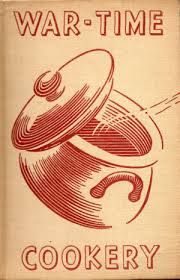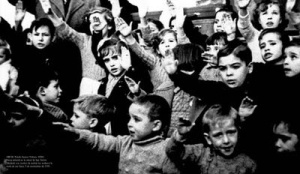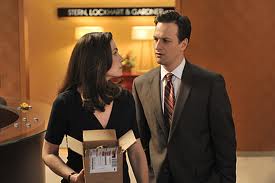- Grandmother
“Bread is bread,” my grandmother would have said. Stale or fresh: bread is bread. Our Father, give us our daily bread. Let’s break bread. It is their bread and butter. She thinks she is the best thing since bread. He knows which side his bread is buttered on.
This young woman, exhausted and broken at only thirty years of age in her minute unfurnished kitchen never throws bread out. It is a sin. Bread goes fast from under the fingers of hungry children in post war Spain. Two little girls, my mother and one of her sisters, fight over a piece of bread. Tooth and nail.
The fight was so fierce their oldest sister remembers it to this day. “Who won?” I ask. “I cannot remember.” She replies. All she can remember is that they went at it like cats. Four years of age. Five years of age.
Bread could hardly go stale in a house full of fiery hungry girls. If it falls on the floor you pick it up. Bless it. Lightly kiss it. Put it back on the plate. Hastily eat it before it is claimed by anyone else.
Bread going stale is like seeing the tail end of a rainbow after heavy rain. Bread going stale means a piece of lard or a slice of ham; turnips on the roast; a fistful of chestnuts. Bread going stale signals a temporary windfall, a pair of brackets on the long text of hunger. How can bread go stale when there is nothing else to eat but runny lentils or the claw of a chicken thrown into a clear broth of onion and tears?
- Mother
I am six, seven, eight years of age and every day my mother sends me to buy a stick of bread after school. It costs twenty-five pesetas; she carefully slides every coin onto the palm of my hand and makes me close it into a fist before I take off. On my way back I eat the top crust skipping over the cracks on the pavement. When I reach my tower block I burrow my fingers in the hole and pull out its fluffy white dough to stuff it in my mouth as the lift goes up to our flat. The fresh smell of bread and the stale smell of bleach mix up as I am taken up to the fourth floor. I push the bread into the cloth bag before giving it to my mother, maimed.
Fresh bread every day and plenty more: jars of Nutella; Marietta biscuits; apples and oranges; soupy rice; boiled ham and cured ham; slices of chorizo; crunchy carrots; Manchego cheese; a glass of flavoured milk; popcorn; chicken wings crisply fried you think nothing of; a fried egg; green beans with boiled potatoes; crisps; a pomegranate deseeded into a bowl.
Yet every morning, my mother brings me a bowl of yesterday’s bread broken into a bowl of warm milk with a sprinkle of sugar. She lets me sit on the edge of her bed in my nightgown and side-by-side, in silence, we eat our bowl of stale bread in warm milk and we listen to her favourite serial on the radio.
- Daughter
I am sitting across from a close friend in a fashionable restaurant in Dublin city. We scan the menu before we make our selection. We have commented on the décor being to our taste: just-so hints of modernism in the carefully contrived veneer of its sparseness. The turquoise blue of the velvet banquettes, we sigh. The leather tan on the chairs, say no more. The aluminium industrial frame of the legs of the tables shining over the parquet, she nods. I admire the deep blue tint on the wall before a tall glass partition. She peers beyond the glass to our right, trying to see beyond the railings of a balcony that hovers over the inner courtyard downstairs. I’d like to have an elderflower martini later, I say. Fat chance with all the revellers downstairs crowding the cocktail bar.
The waiter comes to take our order. I hesitate between having the asparagus and prosciutto salad or the Tuscan Panzanella salad for starters, not knowing what the ingredients are in the latter. The waiter tells me that the main ingredient is bread soaked in a tomato sauce and I nod. I will have that.
When the salad arrives we realise that the bread is a version of our “migas”; our “picatostes”: stale bread given a second wind in a marinade of vinegar and tomato. It is the first of three courses for me. I have my elderflower martini at the table at the close of the meal.











